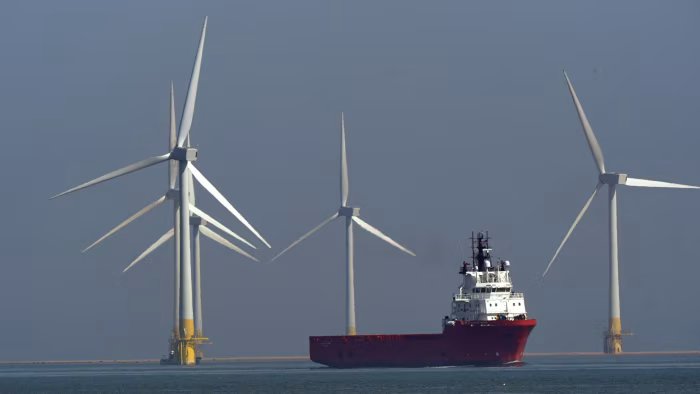Stay informed with free updates
Simply sign up to the Renewable energy myFT Digest — delivered directly to your inbox.
The UK’s budget to support offshore wind farms could jeopardise its target of decarbonising the power sector by 2030 but is likely to help control rising energy bills, industry analysts have said.
Ministers on Monday announced a budget of £1.08bn annually for offshore wind subsidy contracts awarded in this year’s auction round, which is critical to filling the country’s pipeline of renewable projects for the next few years.
Pranav Menon, senior research associate at Aurora Energy Research, said the allocation would be enough to procure slightly less than 5 gigawatts of capacity if offshore wind developers bid into the auction at a similar level to last year.
However, it probably would not be enough to meet Labour’s flagship goal, which would require extensive investment into new wind and solar farms, and electricity cables.
The budget had “definitely come as a bit of a surprise, given that it almost certainly puts the government’s CP2030 target out of reach,” he noted.
It comes as Ed Miliband, energy secretary, is under pressure to keep energy bills down in line with his election campaign pledge, as UK households struggle with high costs.
Last week, the Tony Blair Institute urged the government to prioritise cutting bills ahead of the clean power target, warning that “abundant electricity” was now a “prerequisite for economic leadership”.
“This could be the first signal that the government is prepared to water down its CP2030 target, recognising the growing pressure from households and businesses to keep bills down,” Menon added, referring to the budget announcement.
Each year, the government auctions “contracts-for-difference”, which guarantee developers planning new offshore wind farms a fixed price for the electricity they generate once up and running. The system is seen as a key tool for ministers to provide an incentive for low-carbon investment.
The guarantee is funded by a levy on consumer bills. If the wholesale price is higher than the fixed price, developers have to pay back the difference.
Developers bid to win the contracts by trying to offer a lower fixed price than competitors. However, the industry’s costs have surged over the past few years, meaning there is a limit to how low they can go.
The annual budget is an estimate of what could be spent each year on subsidising the wind farms once they are up and running. The actual amount is linked to electricity prices and other factors.
This year’s annual budget is about 40 per cent lower in real terms compared with last year. However, ministers have also extended the terms of the contracts, so they now run for 20 years instead of 15.
The extension is intended to give generators more certainty over prices, lowering their risk and financing costs.
Trade group RenewableUK said it would only procure about a quarter of the capacity eligible for the contracts this year, and urged the government to increase the budget. Ministers can increase the budget depending on what bids they receive, so this could yet happen.
“An ambitious pipeline of renewable energy projects is crucial for triggering large-scale private investment in offshore wind supply chains,” said Ana Musat, the group’s executive director of policy.
Alon Carmel, at PA Consulting, added: “If [developers] bid at a similar price level to last year, the amount of offshore wind secured under this budget could be between 4-5GW, lower than the amount required for clean power 2030.
“If prices clear lower, the target could still be on track. But there is every reason to think the industry’s costs are still high.”
Michael Shanks, energy minister, said: “Our competitive new auction process will allow us to buy the right amount of clean power at the right price on behalf of the British people, so we can take back control of our energy.”

